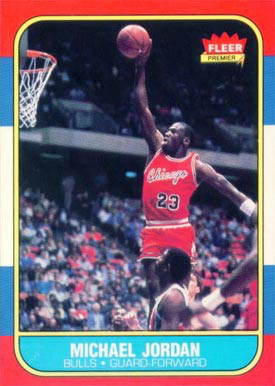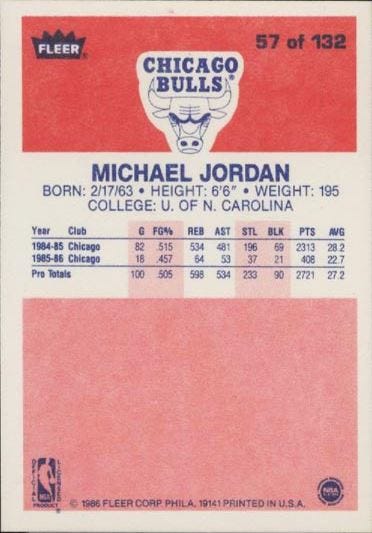about a michael jordan rookie card.
things i’m learning about a michael jordan rookie card: don’t forget to flip it over.
Let me explain.
As a kid, I collected trading cards. I loved looking at the pictures of my favorite players, with their names printed on the front and all their stats printed on the back. I’d study and memorize the player’s details, from their birthday and hometown to where they played in college, along with key stats about their performance in the league.
My friends displayed their most valuable cards in protective cases, showcasing the pictures on the front but I was always more excited about what was on the back.
Arguably the single most important basketball card among the collector community is the 1986–1987 Fleer Michael Jordan Rookie Card.

The photograph captures the essence of MJ in his signature pose. The timeless Fleer logo overlay is complemented by the player’s name, his position, and the team he plays for. Here’s what you’ll see when you flip it over:

On the front is a familiar picture, but when we flip it over, we find more information: specific statistics that can help us learn what kind of player they are. In basketball, a great team needs a mix of players with different strengths: the top scorers need a teammate with vision to orchestrate the perfect pass, taking in to account timing and placement of the ball (that stat is called an “assist”); also essential are those players who play great defense (“steals”), rebound aggressively, and block shots.
In life, we have different kinds of teams to consider. At home, our families. At work, internal teams of co-workers and external teams of partners, clients, and other stakeholders. In our communities, teams come together in neighborhoods, church congregations, sports teams, and around other activities we participate in.
When working with our team members, how often do we flip the card over?
How much do we really know about each other? How often are we looking holistically at our team’s combined mix of strengths? Can we expect to play and win together when we don’t know who’s playing on our team?
As a solution to this problem in my own life, I dreamed up a way to dig deeper to really understand my teammates. I started with myself. As I found ways to identify and communicate my own strengths and style, I was able to create a framework to implement this with other teams I’m a part of.
I call it, appropriately, The Fleer Framework. I like using a kanban tool such as Trello, but you can use other tools/apps to implement this concept as well. Analog (ie: post-it notes) works well too.
Depending on the kind of team you’re trying to manage, you can choose to include different stats for each player.
A photo with name, title, general contact info is standard. I like including the results from the Gallup StrengthsFinder test (top 5 strengths), as well as the Kolbe A Index, which is used to identify an individual’s natural talents and the instinctive method of operation (M.O.) that enable a person to be productive (ie: HOW we work and solve problems).
Including a personal mission statement and core values helps promote alignment, and including a “currently working on” can be great to keep track of priorities and initiatives. A fun fact keeps it playful and reminds us that we’re humans :)
I intentionally designed a place for each person to list the areas/projects/roles they’re an expert in, starting with the phrase: “I can help you with.”
For larger or more hectic teams, you can utilize Trello’s “labels” feature to code your card with a color: green for available to help, yellow when you’re available for quick questions or feedback, and red when you’re fully committed to a project or initiative.